Abstract
A simple model for steady-state transport of a neutral molecule across a membrane is investigated in a preliminary way. In this model, there is a possible conformation change in each membrane unit which alters the access of the binding site for the transported molecule from one bath to the other. Thus, transport cannot be accomplished without a conformation change. Furthermore, we assume a cooperative interaction between nearest-neighbor membrane units in the same conformation. Then, with suitable rate constants and bath concentrations, and if the interaction energy is large enough, the membrane will oscillate back and forth between the two conformational phases, producing a surge of flux in each cycle. The period of the cycle depends on the times necessary to nucleate the two phase transitions.
Full text
PDF
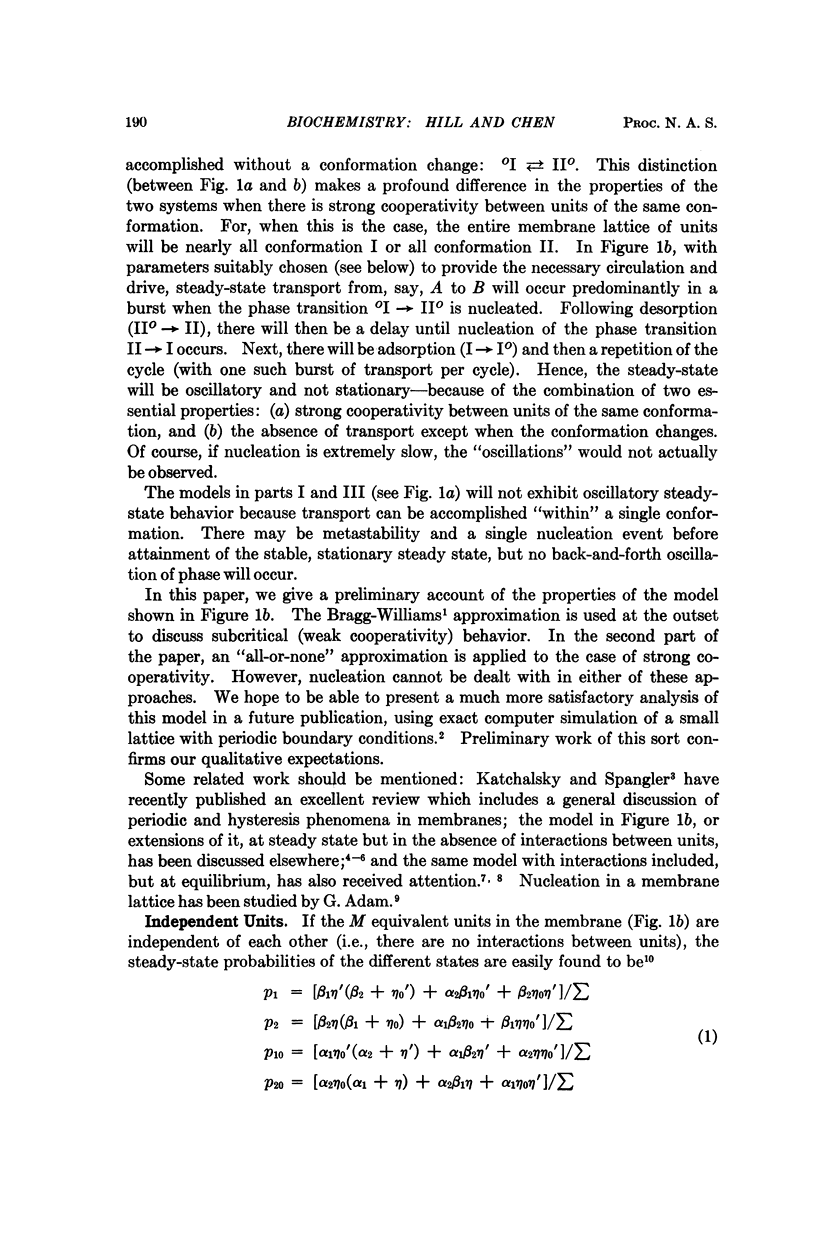

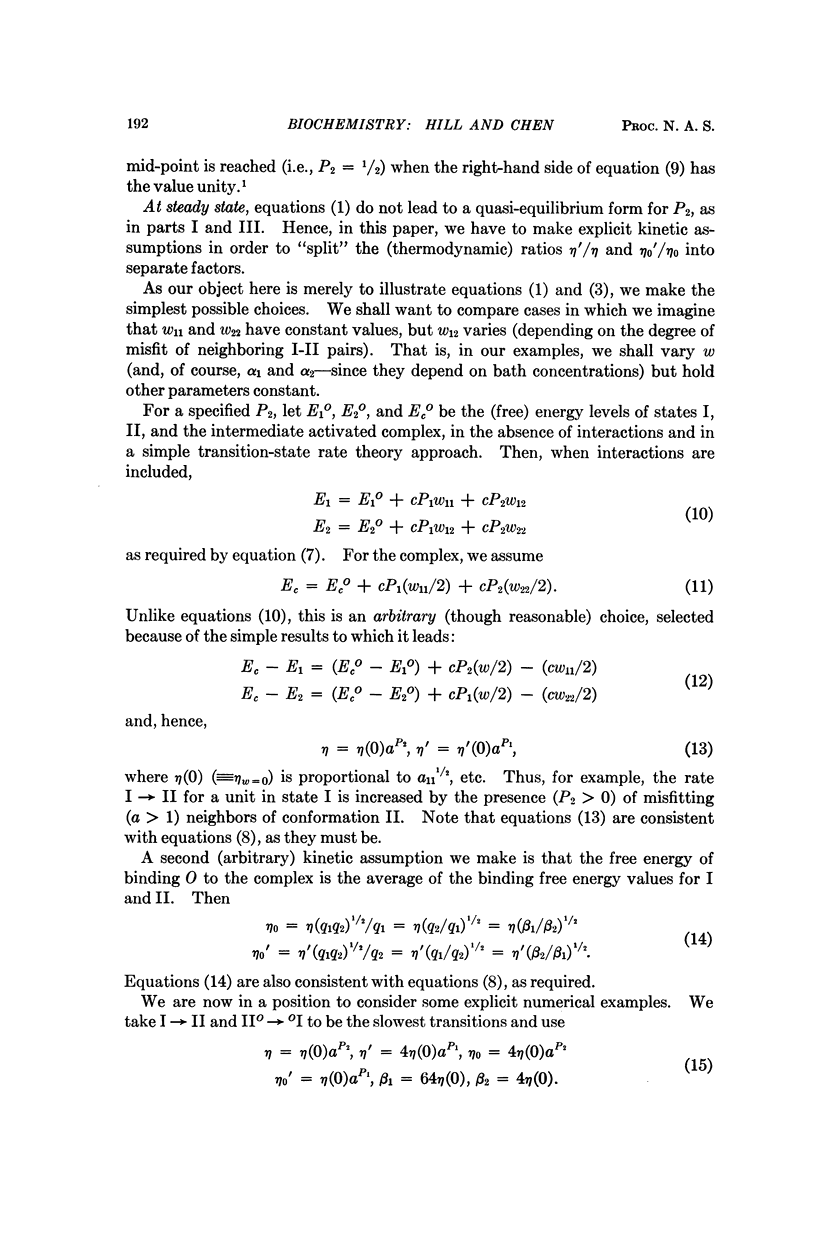
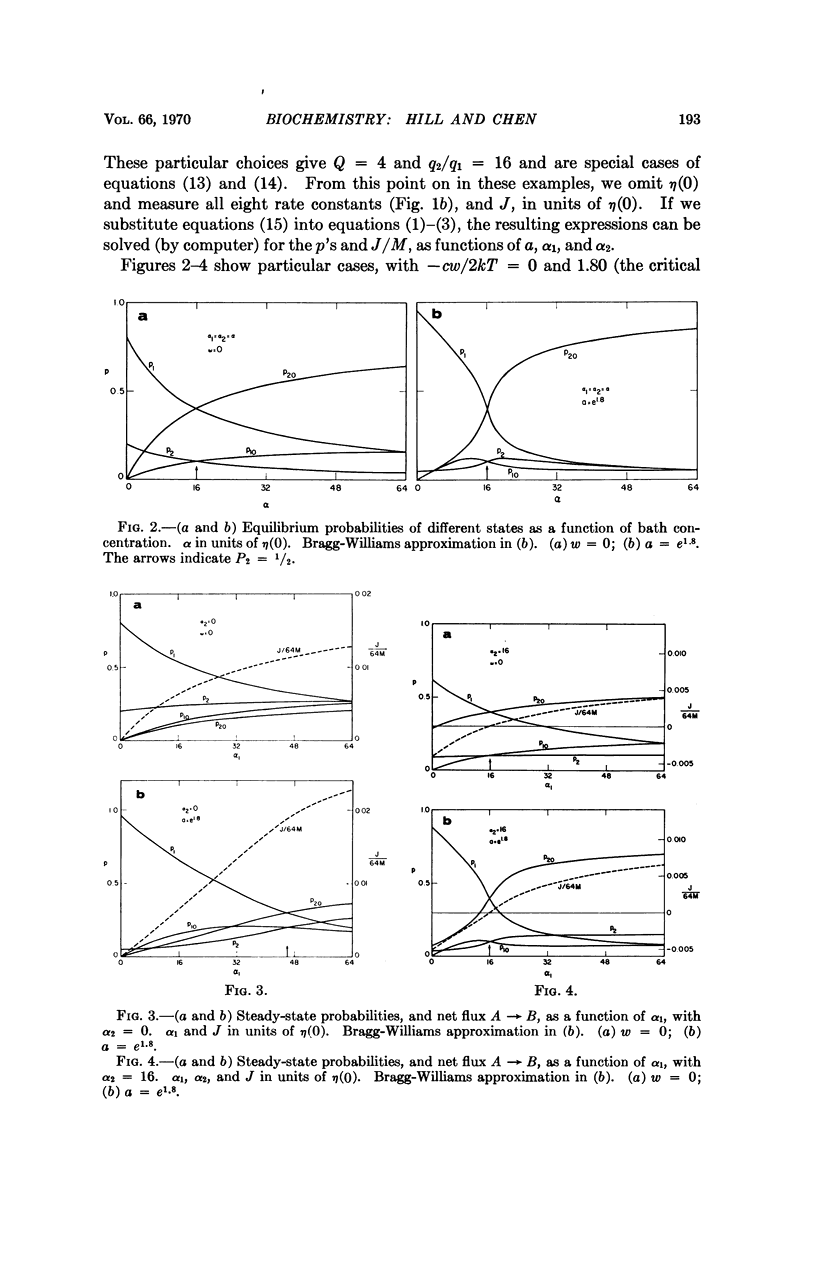
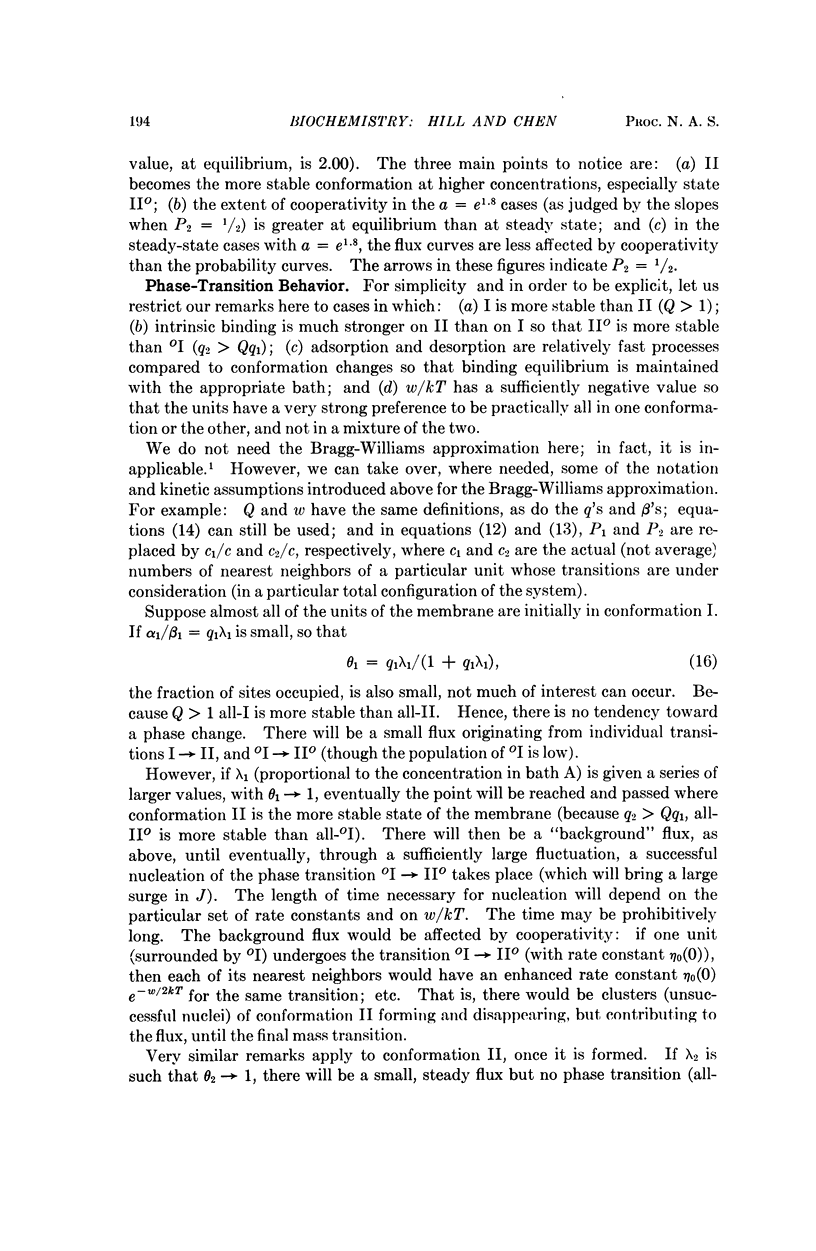
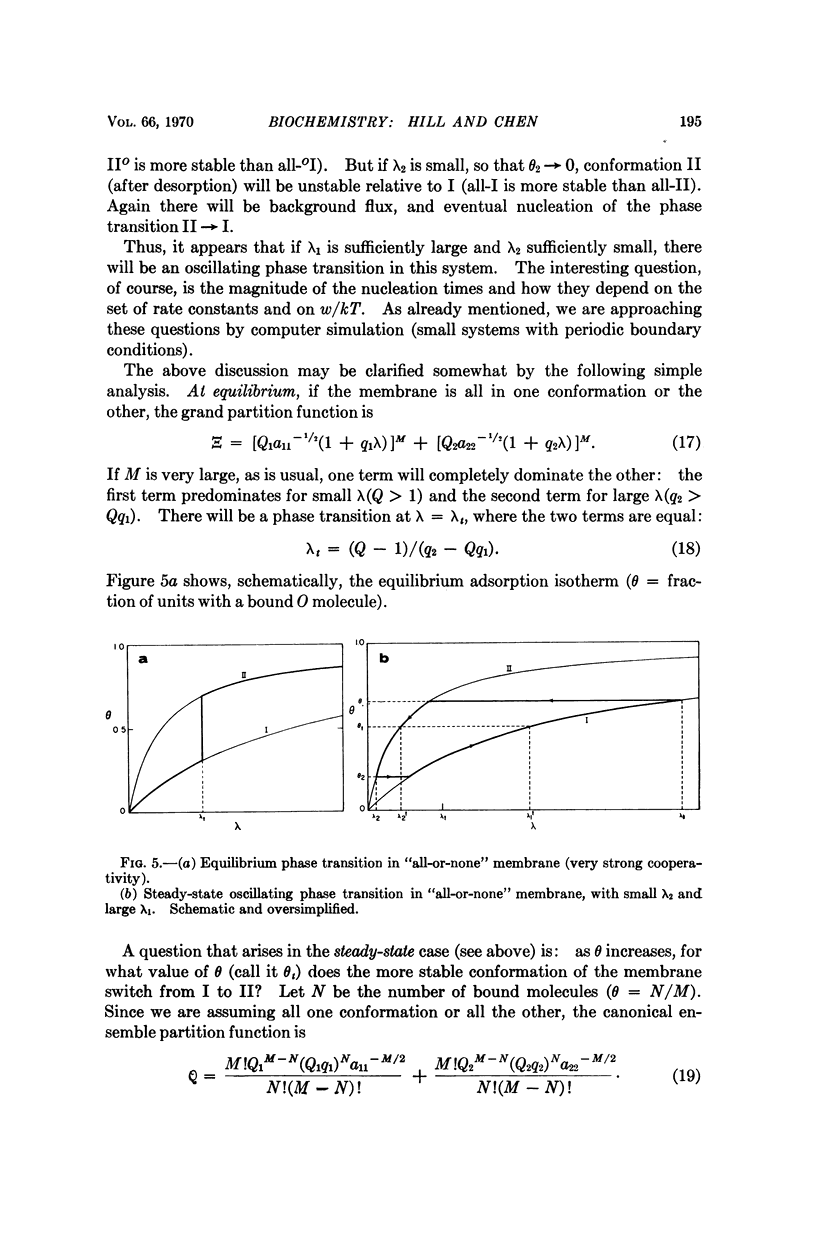
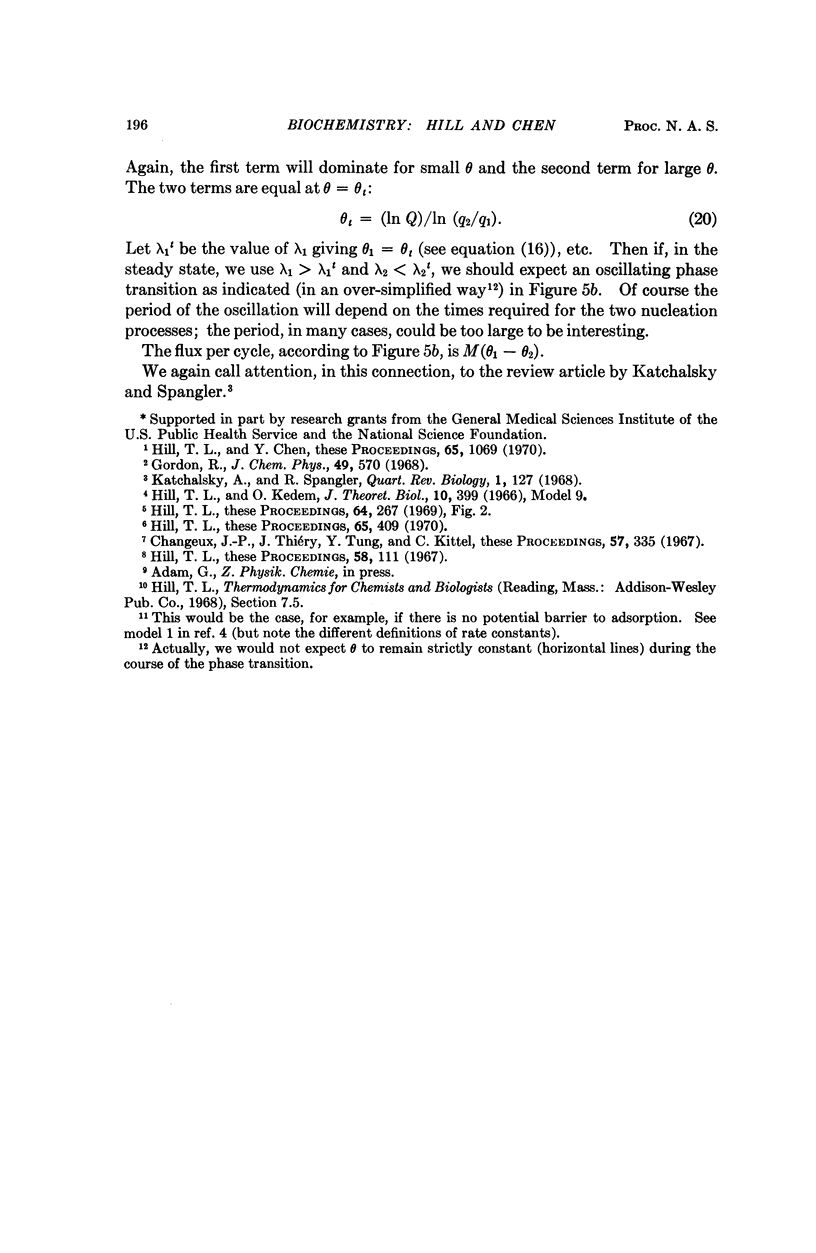
Selected References
These references are in PubMed. This may not be the complete list of references from this article.
- Changeux J. P., Thiéry J., Tung Y., Kittel C. On the cooperativity of biological membranes. Proc Natl Acad Sci U S A. 1967 Feb;57(2):335–341. doi: 10.1073/pnas.57.2.335. [DOI] [PMC free article] [PubMed] [Google Scholar]
- Hill T. L. Analysis of a model for active transport. Proc Natl Acad Sci U S A. 1970 Feb;65(2):409–416. doi: 10.1073/pnas.65.2.409. [DOI] [PMC free article] [PubMed] [Google Scholar]
- Hill T. L., Chen Y. Cooperative effects in models of steady-state transport across membranes. I. Proc Natl Acad Sci U S A. 1970 Apr;65(4):1069–1076. doi: 10.1073/pnas.65.4.1069. [DOI] [PMC free article] [PubMed] [Google Scholar]
- Hill T. L. Electric fields and the cooperativity of biological membranes. Proc Natl Acad Sci U S A. 1967 Jul;58(1):111–114. doi: 10.1073/pnas.58.1.111. [DOI] [PMC free article] [PubMed] [Google Scholar]
- Hill T. L., Kedem O. Studies in irreversible thermodynamics. 3. Models for steady state and active transport across membranes. J Theor Biol. 1966 Apr;10(3):399–441. doi: 10.1016/0022-5193(66)90136-6. [DOI] [PubMed] [Google Scholar]
- Katchalsky A., Spangler R. Dynamics of membrane processes. Q Rev Biophys. 1968 Jun;1(2):127–175. doi: 10.1017/s0033583500000524. [DOI] [PubMed] [Google Scholar]


